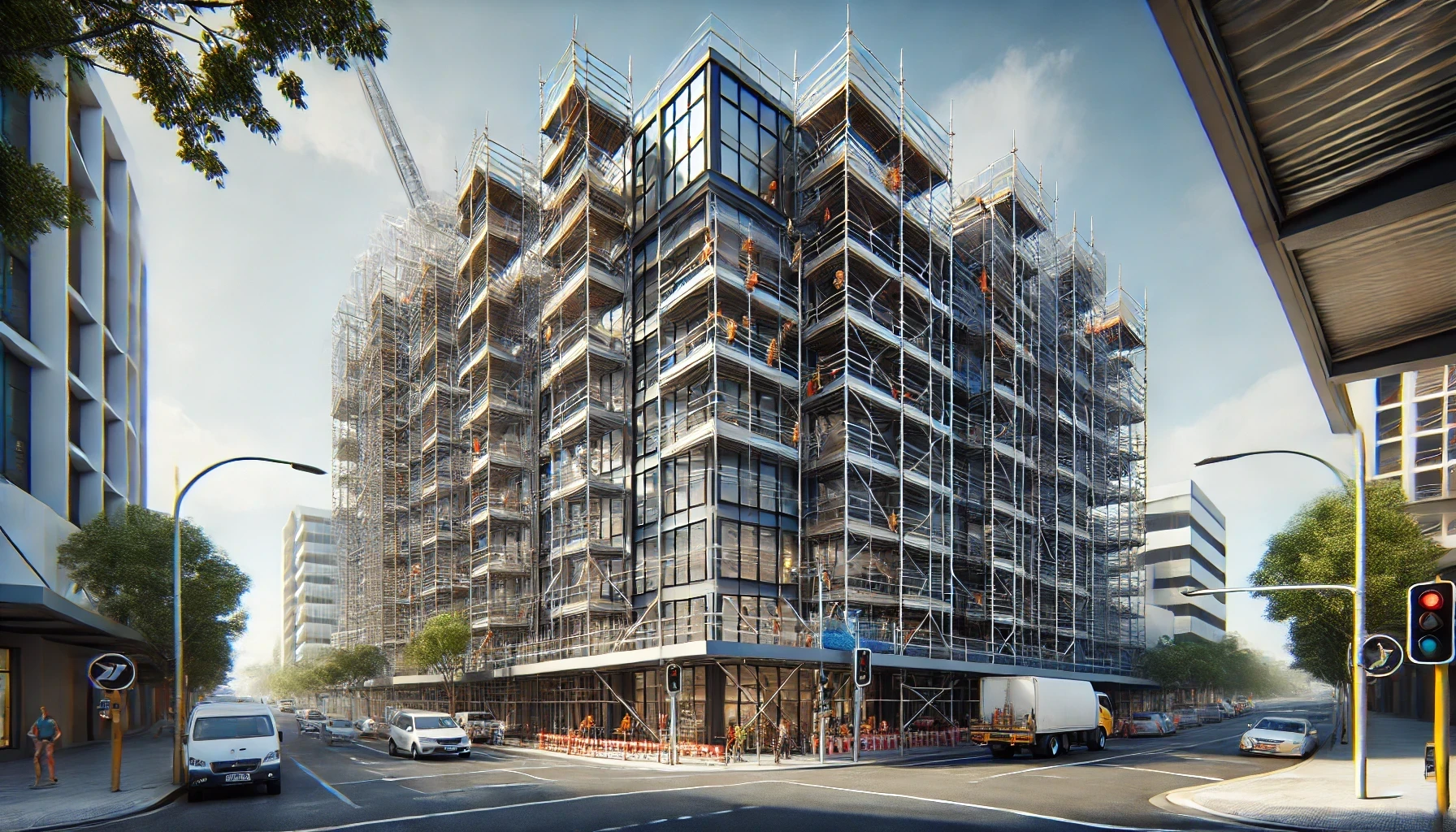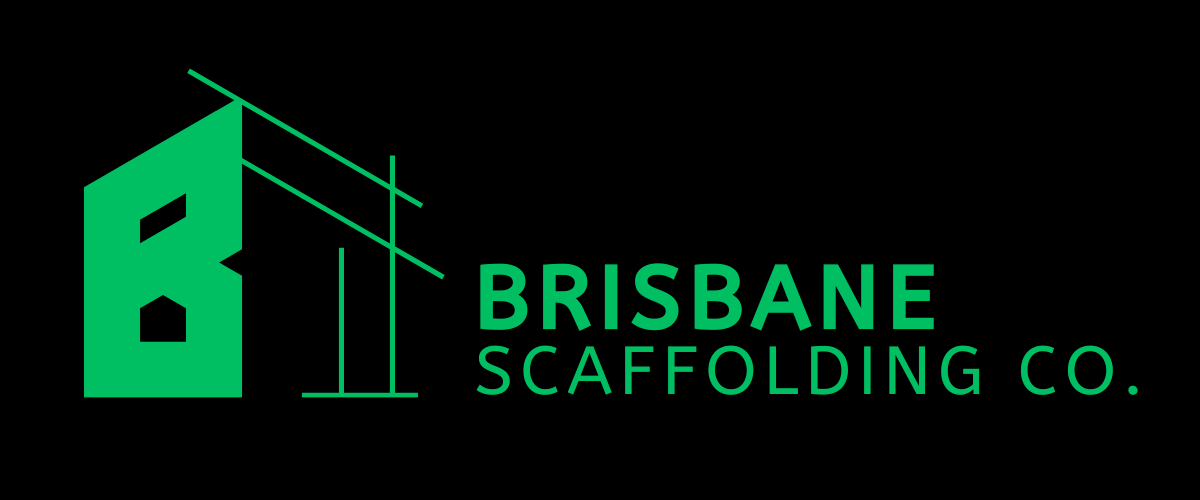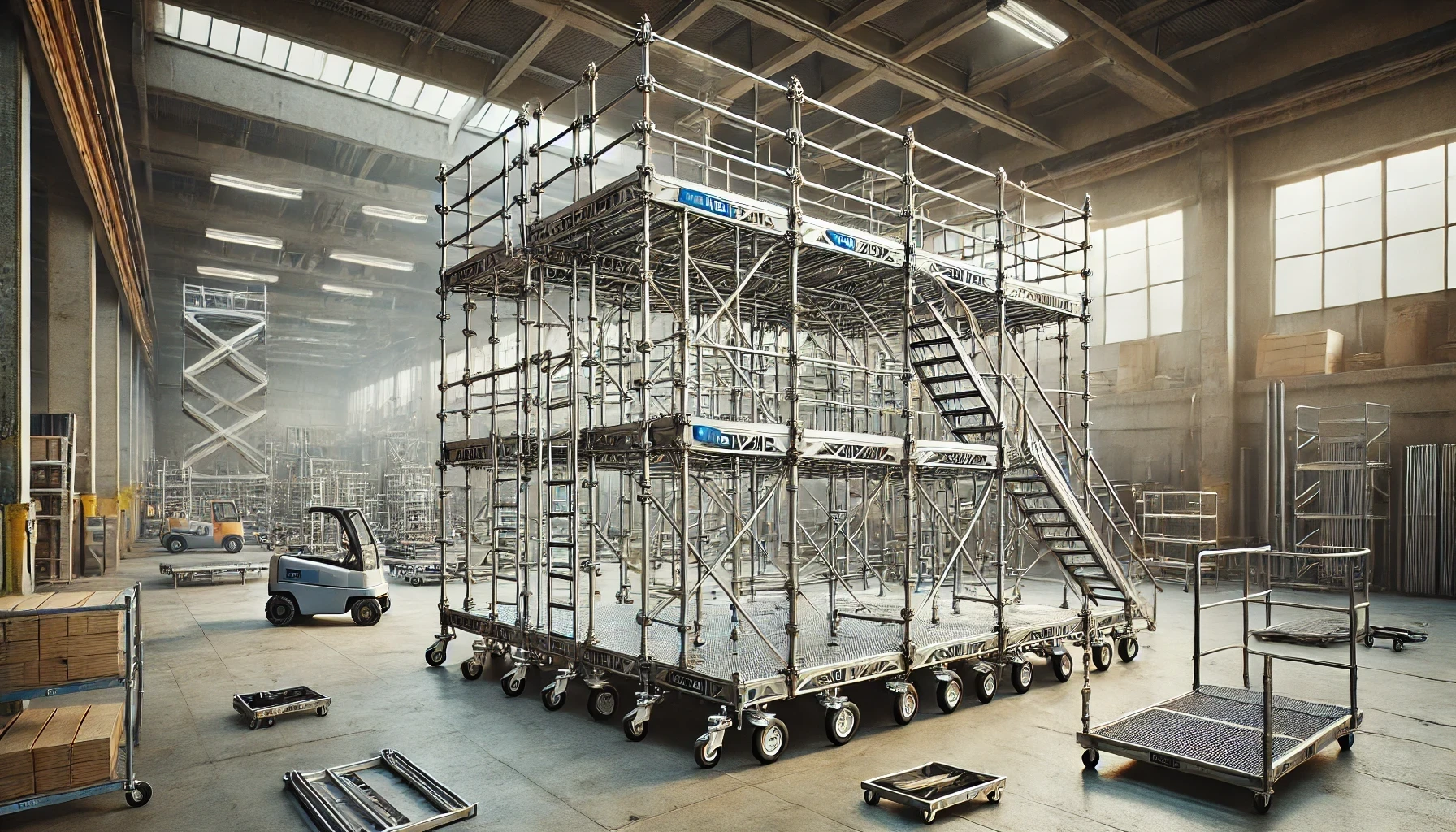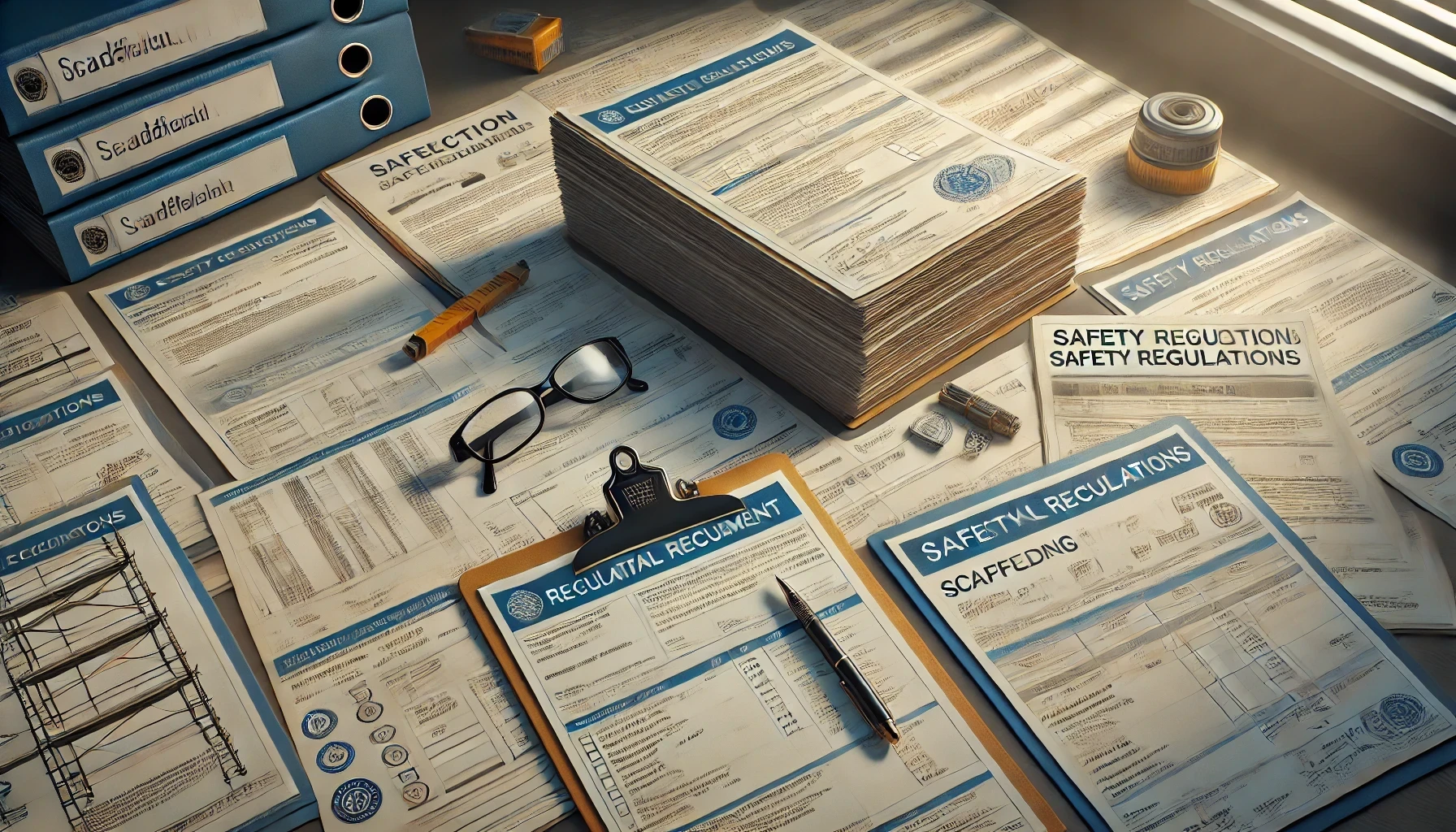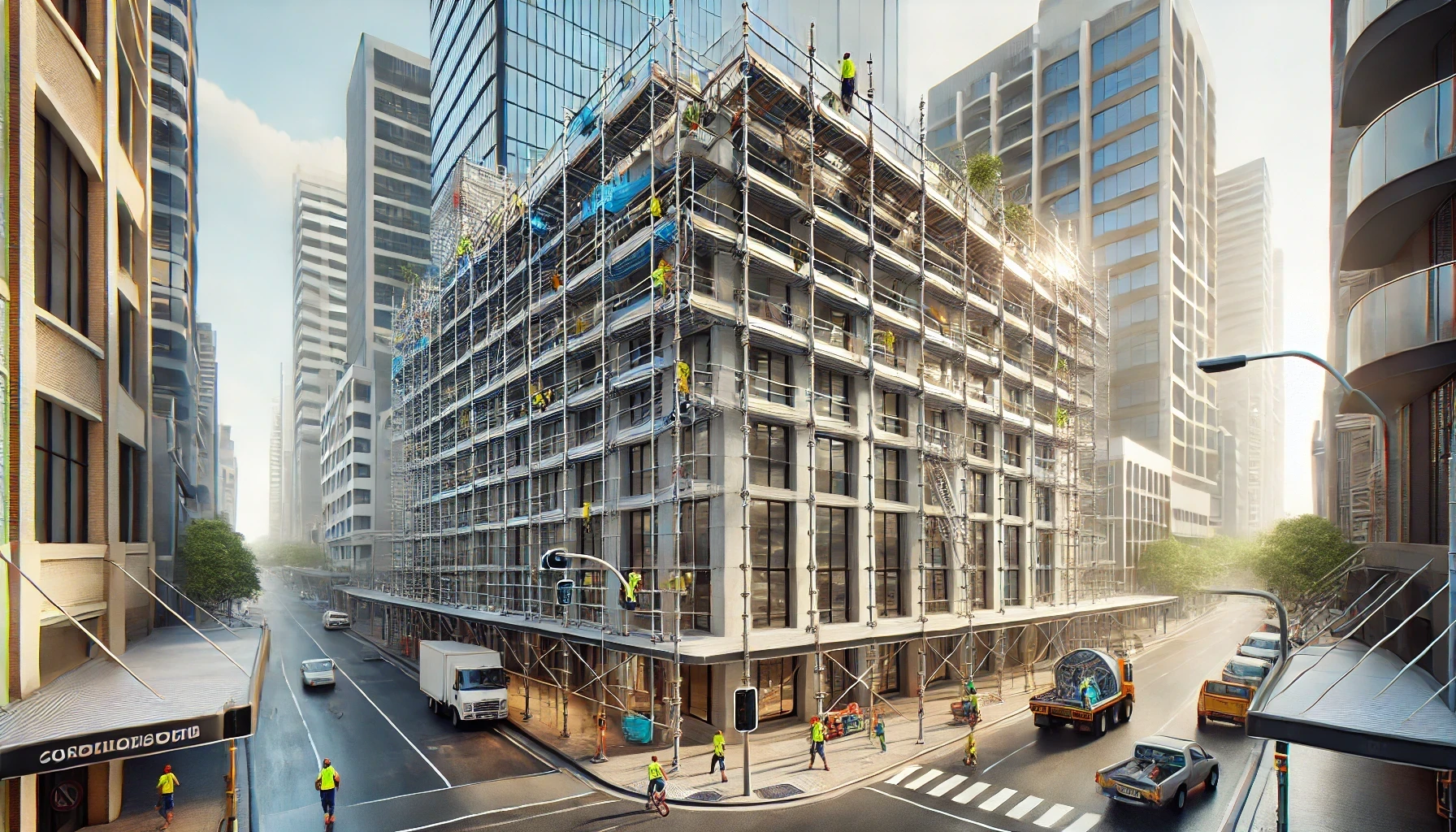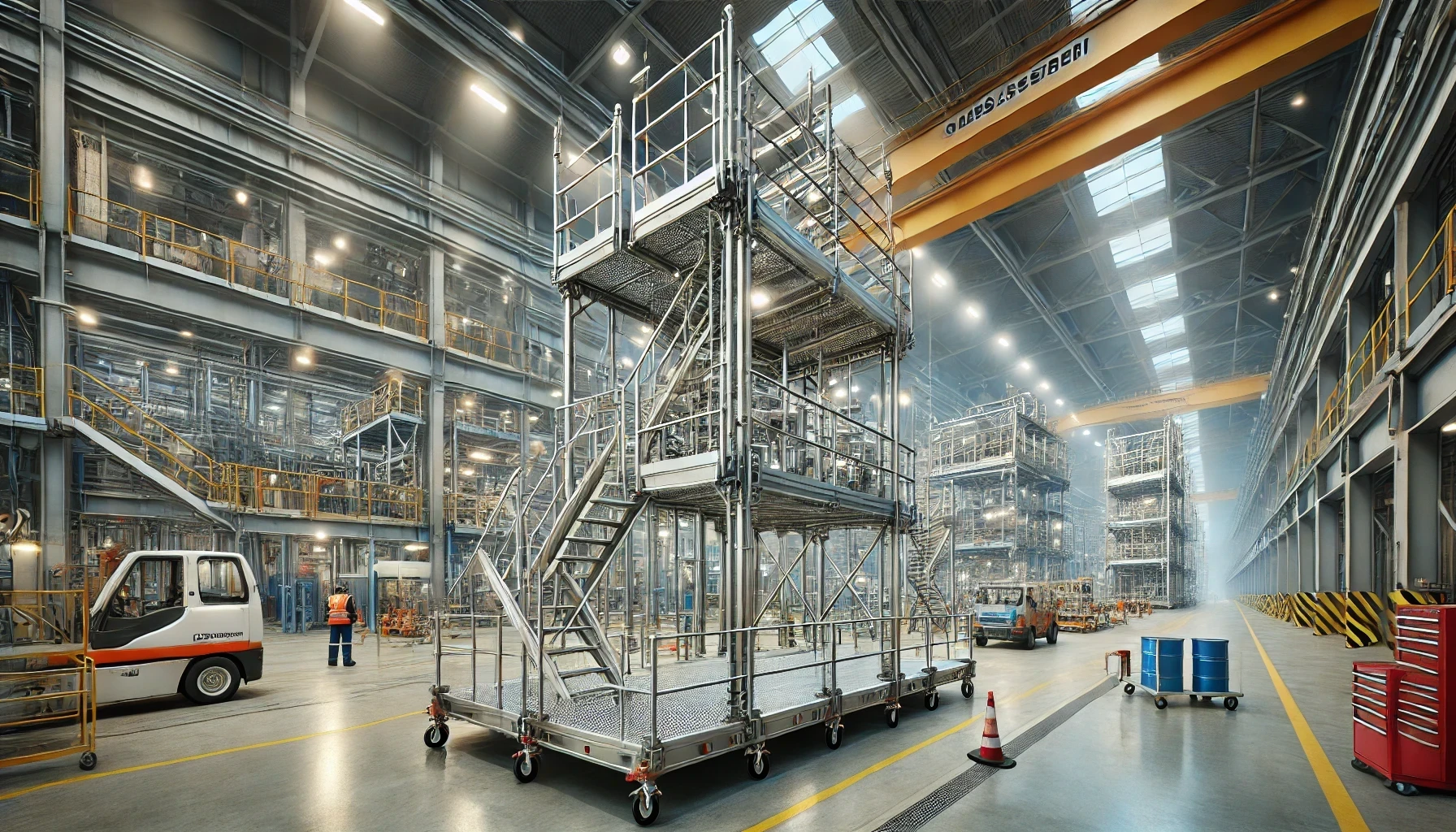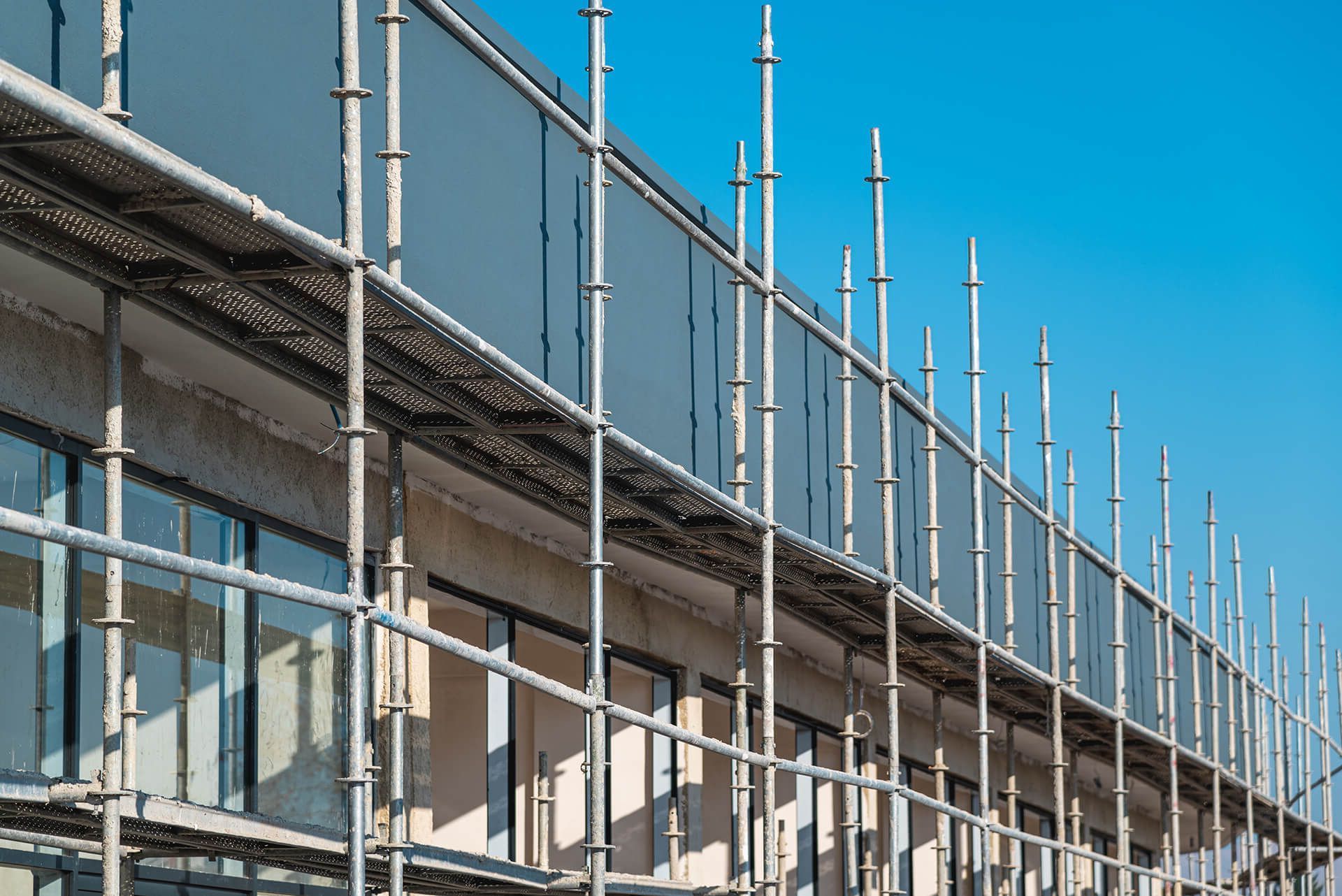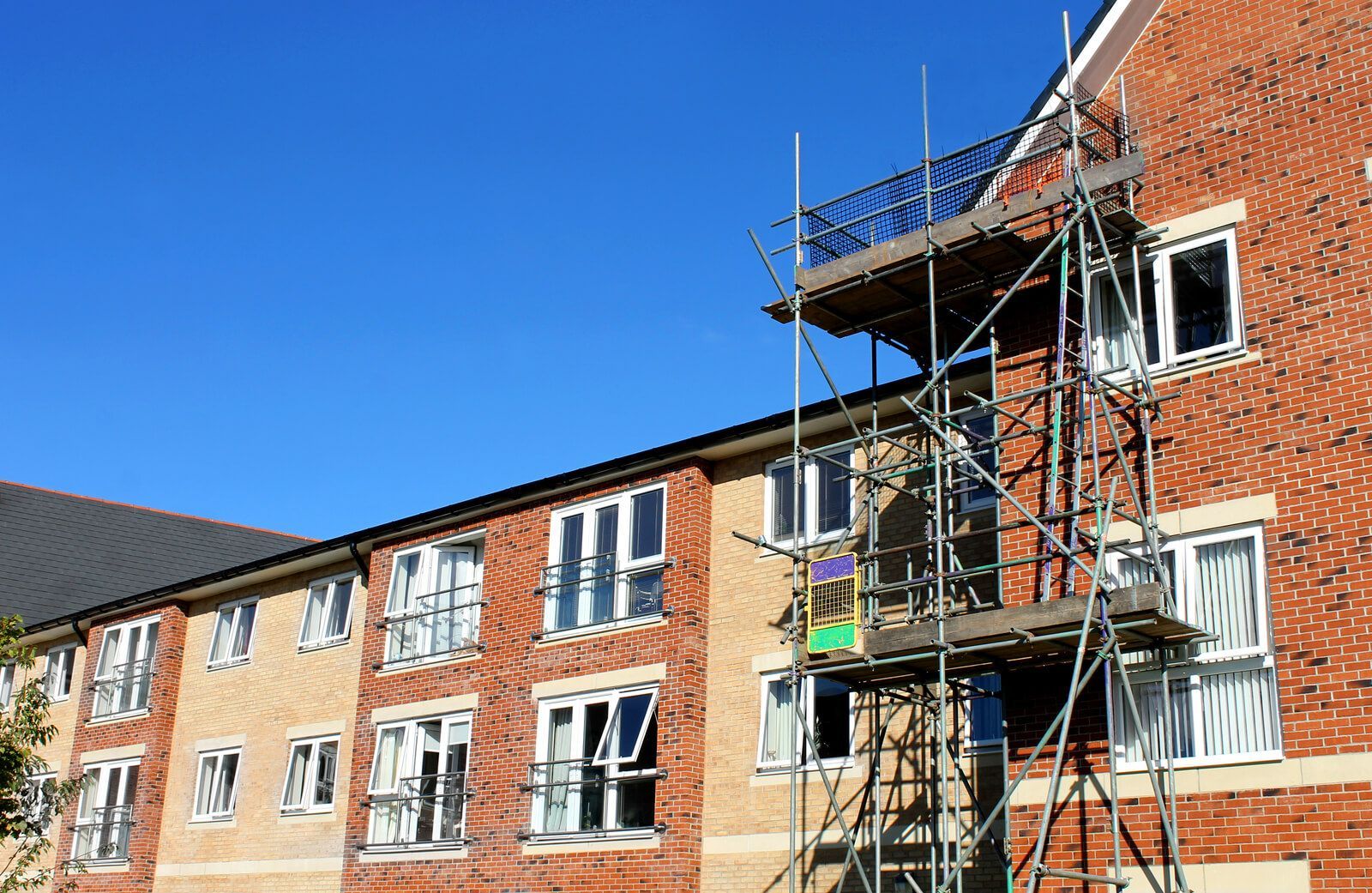How to Safely Erect Scaffolding in Brisbane, QLD
In this article we outline the key steps to safely setting up a scaffold structure, and highlight some of the important safety precautions and procedures that ensure a secure construction environment.

Brisbane Scaffolding Co.'s step-by-step guide for setting up scaffolding
Correct scaffolding set up generally follows the following steps:
1. Preparation and initial setup
- Safety first: The team needs to ensure the work area is clearly defined and barricaded. Clear signage indicating ongoing scaffolding work should be displayed.
- Check components: All parts should be verified against a delivery docket to ensure the correct components are received.
- Foundation setup: Sole plates should be positioned and levelled to form a stable foundation, making any necessary adjustments for uneven ground. The use of larger sole plates on soft ground may be necessary in accordance with required load distribution, and allows adaptability for various ground conditions.
2. Erecting the first bay
- Start at the highest ground: Insert base plates into standards and ensure the standards are levelled. Accurate placement and adjustment of components are crucial.
- Team coordination: Standards and transoms are connected, and the bay should be squared by making sure the diagonals are equal. The base plates should be levelled also.
- Structural adjustments: Use levers to adjust the bay's positioning as required and secure with pins and wedges.
3. Extending the scaffold
- Planking and access: The first lift can be planked to create a working platform, and an access bay with stairs can installed.
- Bracing for stability: Add transverse braces in a zigzag pattern to prevent distortion and sway as more lifts are added.
4. Safety and adjustments
- Continual levelling: The base plates should be continually adjusted to adapt to the site's slope, while checking the scaffold’s level and squareness.
- Faulty components: Set aside any damaged or bent components and notify the scaffold supply company.
5. Finalising the scaffold
- Completing higher lifts: Transfer planks to higher levels and ensure all elements are secured, including toe boards and handrails/guard rails.
- Inspection and tagging: Conduct a final inspection by a licensed scaffolder who did not participate in the erection, to ensure safety compliance and to tag the scaffold as inspected.
How safety precautions influence the setup of scaffolding
Safety precautions are fundamental to the entire setup process of scaffolding. We note the below safety measures that are intricately woven into the scaffolding erection:
- Work area definition and signage: Initially, the area where the scaffolding is to be erected is clearly defined and barricaded. This prevents unauthorised access and alerts people to potential hazards. It is important to display signage to inform that scaffolding work is in progress and that the structure is not yet safe to use.
- Component checking: Before assembly begins, all scaffolding components are counted and checked against a delivery docket. This step is vital to ensure that the correct parts are available and in good condition, therefore preventing structural failures due to defective or incorrect components.
- Foundation safety: The scaffolding’s foundation is carefully laid out and levelled. This includes adjusting the sole plates on uneven ground to ensure a stable base, which is vital for the safety of the structure. Proper grounding of the scaffolding prevents shifting and instability that could lead to collapses.
These procedures underscore the critical role of safety from the onset of scaffolding construction to ensure a secure and stable platform for workers. We highly recommend strict adherence to these safety steps to minimise risks and contribute to a safer construction environment.
Key factors in ensuring stability and safety in higher scaffolding
As scaffolding rises in height, we note several key factors in ensuring continued stability and safety:
- Bracing and structural integrity: As the scaffold rises, the addition of transverse braces becomes essential. These braces help prevent the scaffold from distorting or swaying under weight and wind. Installation of these braces in a zigzag pattern increases the structural rigidity of the scaffold.
- Proper levelling and adjustment: It is critical to continually adjust and level the base plates as the scaffold height increases. This adjustment compensates for any ground irregularities and maintains the verticality of the structure. It is important to check the level and squareness of each bay as it is constructed, to ensure that the entire structure remains stable.
- Planking and access safety: Ensuring that the working platforms are securely planked, and that safe and easy access is maintained throughout the scaffold is key, especially as the structure gets taller. As planks are transferred to higher levels to form temporary working platforms, it is vital to secure toe boards and handrails to prevent falls.
The above practices are crucial in maintaining the integrity and safety of scaffolding as it extends upward. Proper execution significantly reduces the risk of accidents and structural failures, providing a safe environment for workers at height.
Final inspection process for scaffolding setup
Lastly, at the end of erecting the scaffold, a thorough final inspection is necessary to ensure that all parts of the scaffold meet the required Australian safety standards before it is approved for use. The final inspection process should involve:
- Independent inspection: The final inspection should be conducted by a licensed scaffolder who was not involved in the erection of the scaffold. This ensures an independent and unbiased assessment and helps identify potential oversights.
- Comprehensive check: During the inspection, every element of the scaffold, including the alignment, stability, and attachment of all components (such as ledges, transoms, and braces), is checked. Special attention should be given to the proper installation of safety features like guard rails, toe boards, and access points.
- Scaffold tagging: After a successful inspection, a scaffold tag is completed and displayed prominently at the scaffold’s access point. This tag indicates that the scaffold has passed all safety checks as required by Australian regulations (and any additional State and local requirements), and details the date of inspection and the weight limits. It serves as a certification that the scaffold is safe to use.
- Ongoing monitoring: Scaffolds should be regularly inspected after being certified, especially if they have been altered, after adverse weather, or as dictated by local safety regulations.
This rigorous inspection process is crucial for ensuring the safety and reliability of scaffolding structures, safeguarding workers, and complying with Australian and local construction safety standards.

Factors to Consider Before Choosing Commercial Aluminium Mobile Scaffold Tower Hire in Brisbane, QLD
